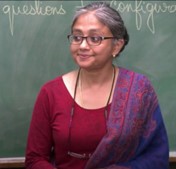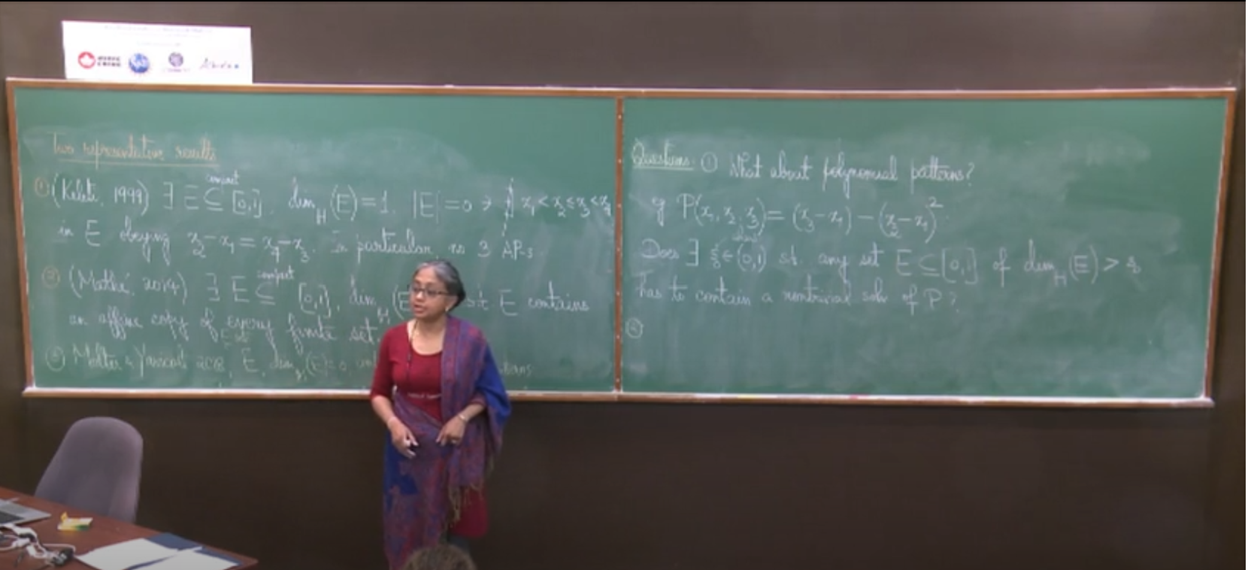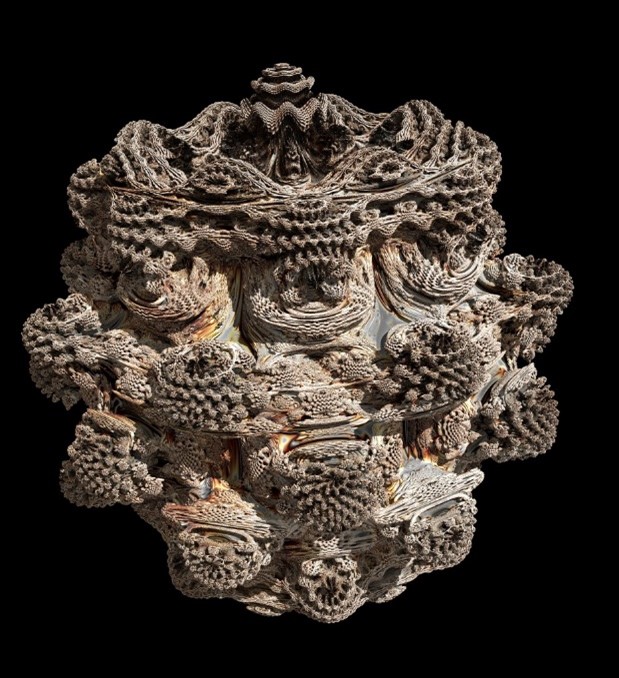Meet Professor Malabika Pramanik – Mathematician, Researcher
Meet Professor Malabika Pramanik – Mathematician, Researcher
My name is Malabika Pramanik, I am a mathematician by profession and I love all things mathematical.

Tell us your story:
I was born in West Bengal, India and raised by my mother and my grandmother. I come from a family of teachers. My childhood dream was to be either a dancer or a teacher. I wanted to teach mathematics like my mother, or teach Bengali and Sanskrit like my grandmother. These two women were instrumental in shaping my tastes, preferences and understanding of most things.
I learnt about the importance of mathematical sciences from
- My mother, a mathematics faculty member at a college in Kolkata,
- A grand-uncle, who had taught himself mathematics with no formal training,
- A high school math teacher with a flair for exposition and reasoning aloud.
Thinking back, these people had very little in common beyond their passion for mathematics. Even then, each approached mathematics in unique ways – as a profession, as a purely intellectual pursuit, as a gift to be freely shared. Collectively, they helped me develop my own appreciation for the subject. I am grateful for their knowledge and insights.
Did you ever have a mentor?
I have never been in a formal a one-on-one mentor–mentee relationship. But I have found inspiration in people at every stage of my life - people who, just by being, have opened my eyes to possibilities, who have made me wonder what it would mean to be in their shoes. Not all of them were mathematicians. They were artists, poets and craftspeople, photographers and film directors, some hailed from socio-economic backgrounds radically different from mine. All of them had powerful messages to convey, and all of them were crystal clear in the communication of their message. Directly or indirectly, they influenced my decision to pursue mathematics and to develop my own personal style in doing so.
What would a typical day look like when you were a young mathematician?
As a student and as a postdoctoral researcher, I had more time to call my own. It was easy to find opportunities for recreation and hobbies, after the demands of work. This changed dramatically after entering the tenure-track stream and deciding to have a family. As an assistant professor, I remember having a severely structured schedule, just to meet the basic demands of profession and family. Spontaneity was a luxury that took a backseat for many years.
I remember early commutes to UBC to teach morning classes. I loved my teaching days. They were exhausting, but intensely satisfying. Teaching has always been therapeutic for me.
The days that I did not teach were given over to research. On one hand, I looked forward to these days. They represented time for immersive thought, joy of creation and collaboration. But there was also apprehension. Progress often seemed infinitesimal, and the tenure clock ticked constantly in the background.
How does a normal day look like now?
A normal workday is a blend of research, supervision and administrative tasks, often partitioned into a sequence of meetings. Research consists of working on projects at various stages of completion, preparing for research talks, reading papers that I find interesting, meeting experts outside my area to learn about their work and their vision of their fields. Part of this work is related to my role as scientific director of BIRS. Supervision involves meeting with students and postdoctoral advisees, understanding their goals and expectations, and helping them advance in their academic and professional journey. The rest is administrative work, dealing with day-to-day operations of BIRS, editorial duties, service on committees and scholarly societies. There is a constant process of prioritization and restructuring of tasks, depending on importance and urgency.
The end of the day is set aside for myself and my family. We take our son to his various activities, help him with his schoolwork, listen to each other’s daily reports, go out for an evening walk, or simply stay at home, listen to music, read a book, cook or clean. It is a beautiful time to look forward to.

What are your biggest challenges as a researcher?
My greatest challenges have been
- Learning to overcome setbacks,
- Being comfortable with the state of not having all the answers,
- Finding the strength to try and re-try after many failed attempts.
Among lesser challenges: I find it difficult to appreciate technicalities without having a good grasp of the fundamentals. Finally, it has been an arduous process of self-discovery to find my own metrics of success.

Lecture at Women in Analysis Workshop (19w5082), June 9-14, 2019, at the Banff International Research Station
Is there anything outside of mathematics that you enjoy?
Many things, almost too many things. Reading has been a source of relaxation and rejuvenation for as long as I remember. Cooking, gardening and bird-watching are more recently acquired delights. I love music, dance, theater and most forms of performing arts. I grew up listening to classical, religious, spiritual and folk music rooted in Bengali culture and traditions. As I travelled in India and abroad, I fell in love with classical Indian music, both northern (Hindustani) and southern (Carnatic), the infinite variations of folk music, and many genres of world music and rhythms.
For the first twenty years of my life, I learned a dance form called Kathak, characterized by graceful hand movements, emotive facial expressions, expression-based storytelling and intricate footwork. It has been years since I have veered off that path, but dance is still an integral part of my identity. If I was not a mathematician, I would have been a dancer.
A distinctive feature of Kathak is its “bol”, recitation of complex and varied rhythmic patterns encased within the framework of a “taal”, a cycle of beats. It was an epiphany for me when in grade 8, I realized the mathematical principles behind these “bols”.

As a mathematician, what has been your happiest moment?
My happiest professional moments are almost always moments of enlightenment and understanding, when something that was previously confusing suddenly makes sense. It is an added bonus when these “aha” moments are experienced together; alongside students, postdocs and collaborators in an environment of shared learning and vigorous, honest inquiry.
At any point in time during your journey as a female mathematician, did you ever feel that you did not fit in?
Yes, much of the time. In my undergraduate years, I was one of two women in a cohort of 28. The gender imbalance and my own introverted nature made it difficult to seek help and find project partners. But the intellectual rewards and challenges made the experience exhilarating in spite of the feeling of isolation. This feeling persisted in graduate school. Once again, I reveled in the challenges of a stimulating and demanding program and felt deeply privileged in the company of the extraordinary talent around me. At the same time, I struggled severely with imposter syndrome and as a new immigrant, in an unfamiliar environment with starkly different cultural norms.
That being said, at the risk of making a virtue out of necessity, difficulty fitting in has its advantages. For me, it has led me to truly value my professional connections, helped me see multiple perspectives, offered me a greater appreciation of different pathways to success.
There have been a lot of initiatives in trying to make the mathematical community more inclusive. Can you talk about the changes in this community in the last 10 years?
There has been a lot of positive change, on individual, organizational and institutional levels. Perhaps the biggest change is in the public perception that there is a *need* for change, that it is *our* job to be part of that change. As evidence, there has been slow but incremental progress in representation statistics in many STEM disciplines compared to their counterparts 10-15 years ago. There is now an abundance of meetings and webinars raising awareness about under-representation. Universities and organizations have implemented policies on equity, diversity and inclusion. Measures previously considered irrelevant, or perhaps even detrimental, to excellence are now essential components of quality assurance. The current situation is far from ideal, but the trend is positive.
Do you have any suggestions to make this department a better place for everyone?
There is an institutional movement within UBC to make our campus a safe, welcoming and inclusive place. Our research, teaching, recruitment, hiring and evaluation practices are subject to oversight by EDI experts and scrutinized by funding agencies. UBC’s Equity and Diversity Offices, the outreach initiatives of Faculty of Science, math department’s EDI committee, and the numerous lectures, panels and campus-wide orientation events are testament to changes in the air. For my part, the most rewarding experience has been the large number of grass-roots initiatives in our department. My heartfelt thanks to all faculty, staff, students and postdocs who strive
- To create forums for free and respectful exchange;
- To ask questions and learn about the diversity in the community we serve,
- To take steps to expand ourselves to embrace that diversity.